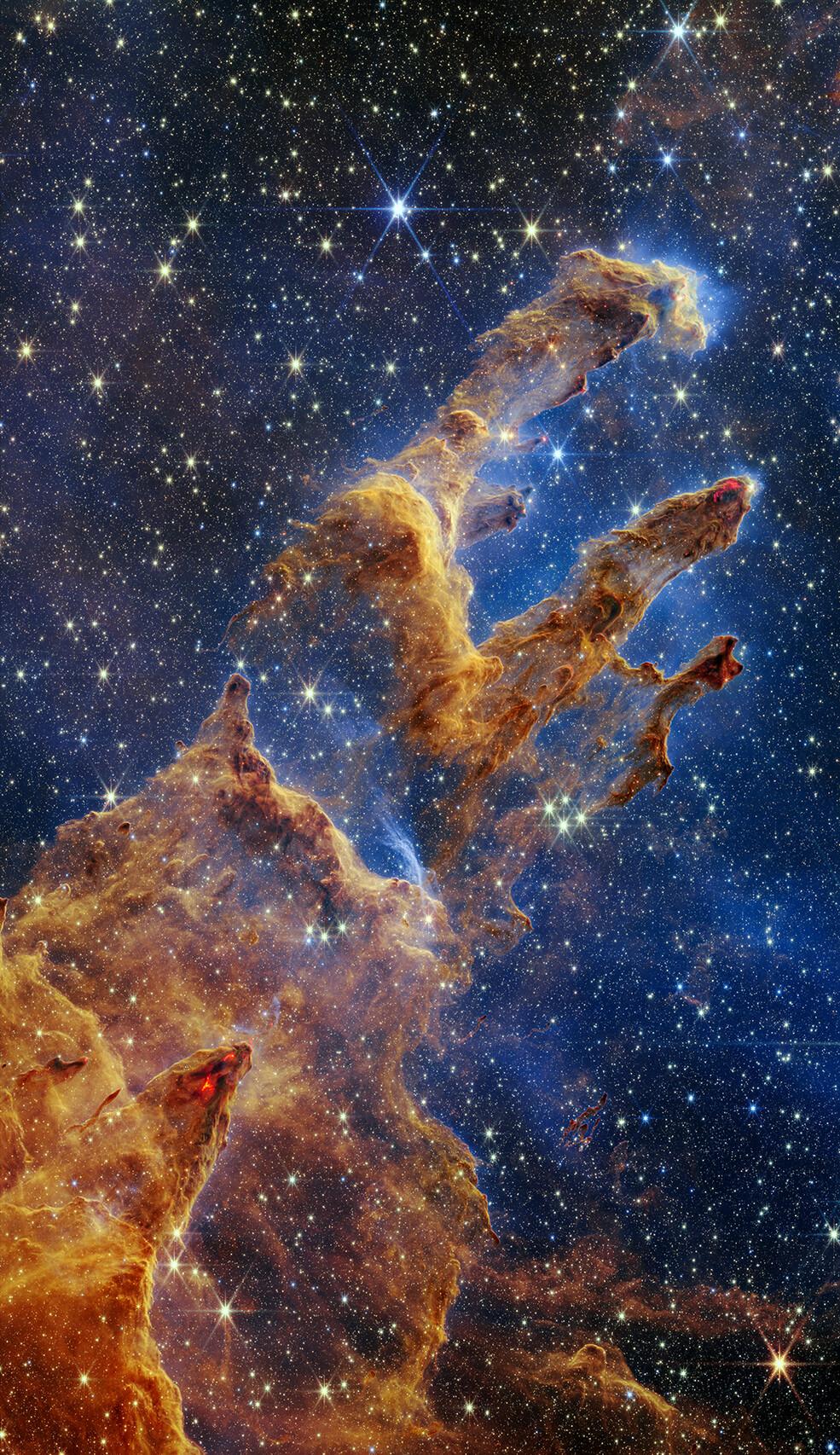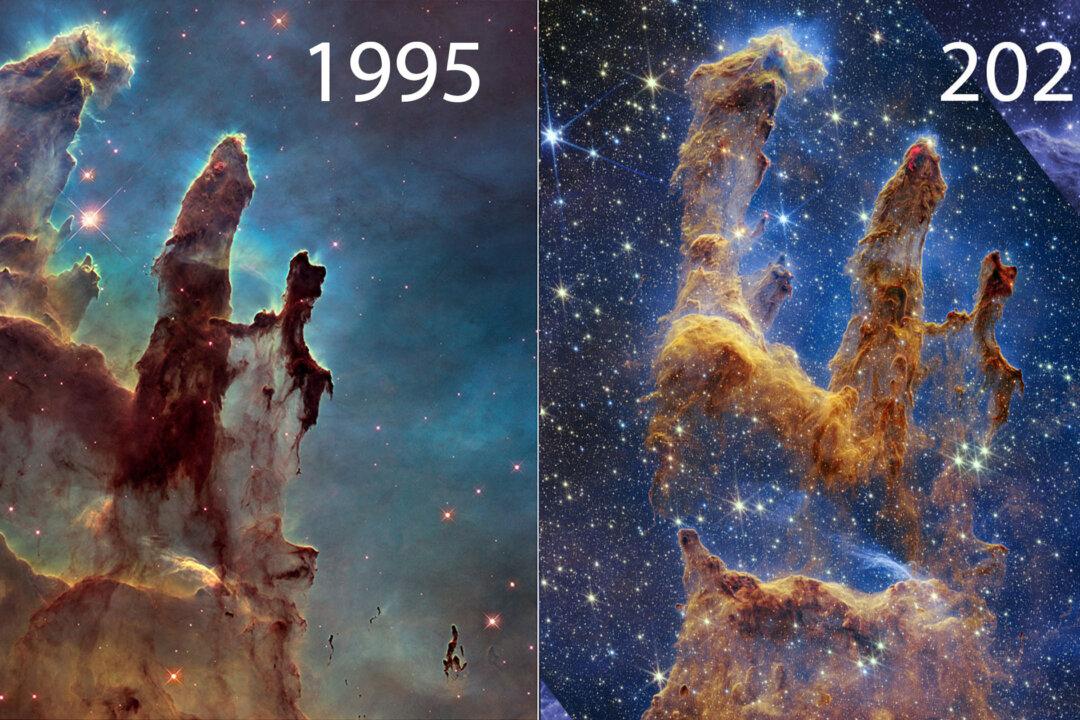Comparing old Hubble observatory pictures with ones from the brand-new James Webb Space Telescope (JWST) is a bit like contrasting grainy VHS tape with crisp, laser-sharp 4K. NASA just released this show-stopping new nebula photo, adorned with countless baby stars sparkling like cosmic Christmas decorations, and it’s enough to make your knees wobble.

The Pillars of Creation nebula, captured by NASA’s James Webb Space Telescope, which launched on Christmas Day in 2021. (NASA, ESA, CSA, STScI; Joseph DePasquale (STScI), Anton M. Koekemoer (STScI), Alyssa Pagan (STScI)).






